2008 US Presidential Election


LATEST AUSTRALIAN BUSINESS NEWS
 Australia has recorded its highest annual rate of economic growth in three years, with the latest national accounts showing Australia's gross domestic product grew 0.9 per cent in the June quarter.
Australia has recorded its highest annual rate of economic growth in three years, with the latest national accounts showing Australia's gross domestic product grew 0.9 per cent in the June quarter.In a brief article today, the ABC reports that although the 0.9% is down from the surge of 1.6 per cent in the March quarter, it is stronger than widely expected. It comes as unemployment is down to record lows of 4.2% and inflation is safely within the Reserve Bank's 2% - 3% band.
It has been enough to take annual economic growth to 4.3 per cent, a rate unsurpassed since June 2004.
Growth in the last three months has been driven by business and government investment spending.
Household consumption has grown moderately, the housing sector has contracted slightly and the drought is still weighing on the performance of agriculture.
David

LATEST AUSTRALIAN BUSINESS NEWS
 Energy market reform and the development of best practice market arrangements will play a key role in the global effort to address climate change according to Australia’s Federal Industry Minister.
Energy market reform and the development of best practice market arrangements will play a key role in the global effort to address climate change according to Australia’s Federal Industry Minister.David
LATEST AUSTRALIAN BUSINESS NEWS
 A team of four personnel from the United States Air Force will visit Tennant Creek in the Northern Territory of Australia to monitor the launch of the National Aeronautical and Space Administration’s (NASA) Dawn spacecraft.
A team of four personnel from the United States Air Force will visit Tennant Creek in the Northern Territory of Australia to monitor the launch of the National Aeronautical and Space Administration’s (NASA) Dawn spacecraft.
The
As part of the same mission a United States Air Force NKC-135 aircraft will be operating out of
This mission will attempt to answer questions about the formation of our Solar System. Data returned from the Dawn spacecraft could provide opportunities for significant breakthroughs in our knowledge of how the solar system formed.
Over the last decade Defence has supported five similar NASA missions as part of
David
LATEST AUSTRALIAN BUSINESS NEWS
 Research and development by Australian small businesses has risen by 17 per cent to reach $1.3 billion, according to the Australian Bureau of Statistics (ABS).
Research and development by Australian small businesses has risen by 17 per cent to reach $1.3 billion, according to the Australian Bureau of Statistics (ABS).The ABS reports R&D expenditure in small businesses reached $1,316 million in 2005-06, a solid improvement on the 2004-05 figures of $1,130 million.
Importantly R&D expenditure by micro-businesses (less than five employees) increased by 18 per cent to reach $354 million. Small business is spending more on R&D, developing new goods and opening up new markets.
In a global economy, small business has to be innovative to compete. The good news is Australian small business is taking on the best in the world and winning.
Australian R&D Tax Concessions offer:
David
LATEST AUSTRALIAN BUSINESS NEWS
 US investment bank Lazard has followed in the footsteps of the Lehman Brothers purchasing an established Australian investment bank in order to gain greater access to the Asia-Pacific region.
US investment bank Lazard has followed in the footsteps of the Lehman Brothers purchasing an established Australian investment bank in order to gain greater access to the Asia-Pacific region. Lazard has purchased Carnegie Wylie for an undisclosed combination of cash and stock with the acquisition being effective immediately.
Lazard President, Mr Charles G. Ward III, said that the acquisition of Carnegie Wylie was another important step in the bank’s five-year strategy to expand its financial advisory business by geographies, and reinforce its commitment to provide premium service to clients.
The acquisition will allow Lazard to bring
Lazard's existing Sydney-based financial advisory team will join Carnegie Wylie. The combined group will be lead by co-founder and principal of Carnegie Wylie, Mr John Wylie.
Carnegie Wylie co-founder and principal, Mr Mark Carnegie has been appointed CEO of Lazard’s Australian private equity business and Lazard's Australian asset management business will be managed separately.
David

LATEST AUSTRALIAN BUSINESS NEWS
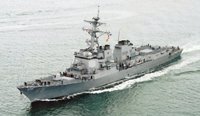 The Australian government has today released its the public version of the Defence Capability Plan (DCP) 2006-16. It outlines more than $51 billion of major capital equipment proposals which are planned to be evaluated by Government over the next decade. This DCP provides many opportunities for US based businesses seeking entry into the Australian defence procurement program. The proposals it contains are essential to deliver the capability required by the Australian Defence Force (ADF) to maintain
The Australian government has today released its the public version of the Defence Capability Plan (DCP) 2006-16. It outlines more than $51 billion of major capital equipment proposals which are planned to be evaluated by Government over the next decade. This DCP provides many opportunities for US based businesses seeking entry into the Australian defence procurement program. The proposals it contains are essential to deliver the capability required by the Australian Defence Force (ADF) to maintain
The recent 2006/2007 Federal Budget announced investment of an additional $2.4 billion over financial years 2011-12 to 2015-16. This continues the additional 3 per cent funding over 10 years announced by the Government in the 2000 Defence White Paper. The additional funding by Government enables the DCP 2006-16 to address the rise in the price of military platforms and technology. Providing a public version of the Defence Capability Plan to Australian industry is a key part of ensuring that the ADF will continue to have the major equipment and systems it needs to do its job.
The DCP 2006-16 is a major document produced periodically from an ongoing review of defence capability requirements.
Some of the major features of this public version of the DCP are:
* Modifying helicopter plans to reduce the number of aircraft types and to create a common joint training and management system. More than $3.7 billion of project funding has been set aside to achieve this aim.
* The addition of more than $500 million of new naval surface capability projects to enhance the ANZAC class air search radar system and to develop undersea warfare detection capabilities, and sea mine counter-measures in 2017 to 2019.
* A 40 per cent boost in funding for Army networking projects as part of the Hardened and Networked Army initiative. The networking enhancements will support Network Centric Warfare capability and are to be introduced across the majority of Army units. Better understanding of the requirements of the Land 17 phase 1 project means that Army’s 105mm and 155mm artillery replacement will be safely deferred for three years whilst Army’s Ground Based Air Defence capability will be enhanced from around 2018 to 2020 in a new project valued at more than $750 million .
* Continuing the projects to support
* Building on the Government’s recent decision to acquire a heavy airlift capability, the DCP retains around $1 billion to refurbish or replace the C-130H Hercules and Caribou aircraft fleets. More detailed analysis of the lifespan of the Orion AP-3C means that the decision to refurbish or replace the ADF’s maritime patrol aircraft can be deferred for 2 years. This DCP also sees increased funding of more than $250 million for the Multi-Mission UAV project – AIR 7000 Phase 1B.
* Greater funding for the ADF’s military satellite communications capability with more than $1 billion to be invested in next generation satellite and ground station infrastructure to ensure continuity of service and flexibility through digital content.
* Continued improvements to Defence’s core enterprise systems including a new improved logistics management system project valued at more than $350 million and operational in 2012 to 2014.
David

LATEST AUSTRALIAN BUSINESS NEWS
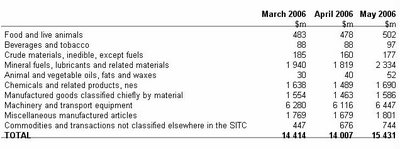

LATEST AUSTRALIAN BUSINESS NEWS
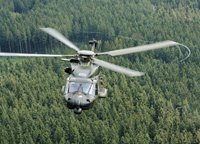 The Australian Government has approved a $ 2 billion acquisition of thirty-four MRH 90 helicopters to replace Navy’s Sea King and Army’s Black Hawk helicopters. The selection of the MRH 90 complements the Government’s decision in 2004 to acquire an initial twelve MRH 90 helicopters as Army’s additional troop lift helicopter. Delivery of the first twelve is scheduled from December 2007 through to December 2009.
The Australian Government has approved a $ 2 billion acquisition of thirty-four MRH 90 helicopters to replace Navy’s Sea King and Army’s Black Hawk helicopters. The selection of the MRH 90 complements the Government’s decision in 2004 to acquire an initial twelve MRH 90 helicopters as Army’s additional troop lift helicopter. Delivery of the first twelve is scheduled from December 2007 through to December 2009.The new twin-engine troop lift helicopters will provide opportunities for joint fleet management. These benefits include greater operational flexibility and efficiency through common operational, training and logistic systems and a capability to rotate personnel, aircraft, spare parts and role-specific equipment between troop lift, special operations and maritime support commitments.
The 34 additional MRH 90s will be assembled in
The emphasis of the Australian industry package, worth $1.2 billion, is on the development and sustainment of critical aircraft mission system capability. The long term viability of the Australian MRH 90 assembly line will be maximized, ensuring greater development of the skill base required to support the MRH 90 into the future through a strategy aimed at promoting Australian industry as part of the Eurocopter global supply chain.
David
LATEST AUSTRALIAN BUSINESS NEWS
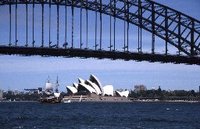 The following summary of Australia’s standing in the world economy – as assessed by the OECD - was printed in the “Sydney Morning Herald “ of 29 March 2006. The “Sydney Morning Herald” can be read on line at www.smh.com.au .The OECD report states that
The following summary of Australia’s standing in the world economy – as assessed by the OECD - was printed in the “Sydney Morning Herald “ of 29 March 2006. The “Sydney Morning Herald” can be read on line at www.smh.com.au .The OECD report states that The hardest working workers in the developed world are the South Koreans, who averaged 2423 hours a year. The best rested are those in the
The figures show the Australian economy does have some weakness. Its household savings rate, the proportion of income put away for a rainy day, was the only country among 15 rich nations that was in negative territory.
Other countries with double deficits include
Since the Howard Government came to office, the OECD estimates,
David

LATEST AUSTRALIAN BUSINESS NEWS
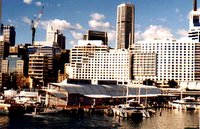 With official interest rates in Australia remaining at 5.5% for the foreseeable future, forecasters at the Reserve Bank of Australia (RBA) are now expecting the annual growth rate of the economy to be around 3%. This is considered by most commentators to be below par and therefore the most likely move in interest rates – will next be downwards.
With official interest rates in Australia remaining at 5.5% for the foreseeable future, forecasters at the Reserve Bank of Australia (RBA) are now expecting the annual growth rate of the economy to be around 3%. This is considered by most commentators to be below par and therefore the most likely move in interest rates – will next be downwards. The local jobs market is tightening with a drop off in job advertisements over the past 3 months. But interestingly, despite the fall in advertisements generally, there has been an increase in job ads placed on the internet. The increase in advertisements in January was 6% - well above expectations with total ads year to date being 30% higher than over the corresponding period 12 months ago.
David

LATEST AUSTRALIAN BUSINESS NEWS
 Both Australia's export trade as well as domestic trade have recorded growth over the December period.
Both Australia's export trade as well as domestic trade have recorded growth over the December period. The value of
Domestic retail sales grew just 0.4% over the same month, which equated to total retail sales of $22.5 billion for December 2005.
Both sets of figures support the prospect for continuing economic growth during 2006, with inflation kept in check and interest rates remaining stable.
David

LATEST AUSTRALIAN BUSINESS NEWS
 Australia’s cost of living – as indicated through the Consumer Price Index (CPI) – has risen slightly over the 3 months ending 31 December 2005. The CPI rise was just 0.5%. This very slight increase has placed the annualised inflation rate at 2.8% for calendar year 2005. The low CPI increase is the smallest recorded for one 3 month period since 2004. The current inflation rate sits comfortably within the desired range set by the Reserve Bank of
Australia’s cost of living – as indicated through the Consumer Price Index (CPI) – has risen slightly over the 3 months ending 31 December 2005. The CPI rise was just 0.5%. This very slight increase has placed the annualised inflation rate at 2.8% for calendar year 2005. The low CPI increase is the smallest recorded for one 3 month period since 2004. The current inflation rate sits comfortably within the desired range set by the Reserve Bank of David

LATEST AUSTRALIAN BUSINESS NEWS
 The record year of 2003-04 for the Australian wine and grape industry was surpassed in 2004-05 with increases in harvest, crush and wine production levels. There were 1,925,490 tonnes of grapes crushed in 2004-05, an increase of 8,252 tonnes on the record crop of the previous year. Beverage wine production was a record 1,422.8 million litres, an increase of 1.3% on 2003-04. There was continued growth in the export of Australian produced wine, which reached 669.7 million litres during 2004-05, an increase of 14.6%. The value of these exports increased 8.9%, to $2.7b. Domestic sales of Australian wine also continued to grow, up 3.1%, to 430.1 million litres.
The record year of 2003-04 for the Australian wine and grape industry was surpassed in 2004-05 with increases in harvest, crush and wine production levels. There were 1,925,490 tonnes of grapes crushed in 2004-05, an increase of 8,252 tonnes on the record crop of the previous year. Beverage wine production was a record 1,422.8 million litres, an increase of 1.3% on 2003-04. There was continued growth in the export of Australian produced wine, which reached 669.7 million litres during 2004-05, an increase of 14.6%. The value of these exports increased 8.9%, to $2.7b. Domestic sales of Australian wine also continued to grow, up 3.1%, to 430.1 million litres.Estimates from the Vineyards 2005 collection show that season 2005 produced another record harvest. The industry appears to have fully recovered from the drought conditions experienced in 2003. Hectares of vines being cultivated increased again, from the record area last year of 164,181 hectares, to 166,665 hectares in 2005. The total area of vines bearing grapes increased from 150,561 hectares to 153,204 hectares, a rise of 1.8%. The area of non-bearing grapes decreased slightly in 2005, down 1.2% to 13,462 hectares.
The net increase in area planted under vines for 2004-05 (derived from vines planted and vines lost during the year) was 1,823 hectares, which was 10.0% less than the net increase recorded in 2003-04 (2,025 hectares).
The wine industry has recorded a second bumper year in a row, with harvest, crush and wine production levels rising above 2003-04 levels.
Figures released by the Australian Bureau of Statistics last Wednesday (January 25th) showed 1,925,490 tonnes of grapes were crushed in 2004-05 - up 8,252 tonnes on the record crop of the previous year.
Beverage wine production was a record 1,422.8 million litres, an increase of 1.3 per cent on 2003-04.
Australian producers exported 669.7 million litres over the year - an increase of 14.6 per cent, with the value of wine exports rising 8.9 per cent to $2.7 billion.
Domestic sales of Australian wine were also strong, rising 3.1 per cent over the year, to 430.1 million litres.
Importers brought in 22.1 million litres valued at $188.2 million - up 23.5 per cent from 2003-04.
David

LATEST AUSTRALIAN BUSINESS NEWS
 The continuing expansion of Australia’s Macquarie Bank into infrastructure projects around the world continues.
The continuing expansion of Australia’s Macquarie Bank into infrastructure projects around the world continues. Press reports indicate that the consortium has offered $US3.85billion for a 75 year concession over the toll road.
The Governor of Indiana has expressed surprise at the size of the bid. This comes as other
David

LATEST AUSTRALIAN BUSINESS NEWS
 The first major phase of a $3 billion investment in the Australian Army's fleet of field vehicles has been released. The three separate Requests for Tender (RFT) have been released on 13 December to replace a vital fleet of Army trucks, four-wheel drives, trailers and modules for the Australian Army's high readiness units. The investment is part of Project Overlander - the largest land project in the Defence Capability Plan worth a total of $3 billion.
The first major phase of a $3 billion investment in the Australian Army's fleet of field vehicles has been released. The three separate Requests for Tender (RFT) have been released on 13 December to replace a vital fleet of Army trucks, four-wheel drives, trailers and modules for the Australian Army's high readiness units. The investment is part of Project Overlander - the largest land project in the Defence Capability Plan worth a total of $3 billion.David
LATEST AUSTRALIAN BUSINESS NEWS
The medical devices sector is worth about $824 million in exports to
David

LATEST AUSTRALIAN BUSINESS NEWS
 The Australian share market has suffered two days of decline, giving the market its largest fall since investors reacted to the impact of 9/11. After about 7 months of good, strong growth this year, the market has responded to what commentators are calling a “correction” – not a “crash”. Since March 2003 the Australian market has risen 60% with an 8% increase just in the last quarter.
The Australian share market has suffered two days of decline, giving the market its largest fall since investors reacted to the impact of 9/11. After about 7 months of good, strong growth this year, the market has responded to what commentators are calling a “correction” – not a “crash”. Since March 2003 the Australian market has risen 60% with an 8% increase just in the last quarter. David

LATEST AUSTRALIAN BUSINESS NEWS
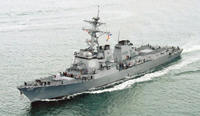 About 20 Australian companies are joining forces in
About 20 Australian companies are joining forces in The exhibition focuses on Defence, Emergency Services and
Australian defence industry, whilst small, has niche capabilities that are equal to or leading the world. However, most of the major defence and security firms are based in the Northern Hemisphere. Whilst
David

LATEST AUSTRALIAN BUSINESS NEWS
 An innovative Australian company, Energetech, which is developing world-leading technology to generate power from wave energy, completed the first successful installation of one of their turbine units off the east coast of Australia, just south of Sydney at Port Kembla. A single unit has the potential to power 2,000 homes without producing greenhouse emissions. The company is currently working on a project for
An innovative Australian company, Energetech, which is developing world-leading technology to generate power from wave energy, completed the first successful installation of one of their turbine units off the east coast of Australia, just south of Sydney at Port Kembla. A single unit has the potential to power 2,000 homes without producing greenhouse emissions. The company is currently working on a project for David

LATEST AUSTRALIAN BUSINESS NEWS

There are approximately 450 nuclear plants in 32 countries and the price of U308 (uranium oxide) has almost doubled in just the last 18 months. In January 2004 it was A$20 a pound compared with A$39 in August 2005.
The local industry is responding to this increasing global demand with reports from the Minerals Council that as many as 25 mining companies are now exploring for uranium in
David

LATEST AUSTRALIAN BUSINESS NEWS
 The Australian service industry sector, including retail, has shown continuing growth over the last recording period.
The Australian service industry sector, including retail, has shown continuing growth over the last recording period. An index of Australian service industry performance rose to a six month high in July due to an increase in business at hotels, restaurants and retail outlets. The Australian Industry Group – a major employer association – has issued its latest data based on industry orders, sales, deliveries and inventory levels. The latest index shows that there has been a 2.6% in these base measures for the month June to July 2005. The Group has said that from the index it can ascertain that there is a continuing expansion of service industry activity.
Retail trade in particular has shown an increase of 1.3%, in the face of what was expected to have been a slow period, due to relatively mild winter weather and some apparent levelling off of overall consumer spending. The overall level of Australian retail spending was $17.2billion for the month of June.
David
LATEST AUSTRALIAN BUSINESS NEWS
 An international student and a first-time traveller have both learned an expensive lesson: — trying to break
An international student and a first-time traveller have both learned an expensive lesson: — trying to break It’s been estimated that an outbreak of foot and mouth disease would cost $450 million in control measures, and would cause a $13 billion loss to
The second passenger, a 52-year-old woman visiting relatives in
David

LATEST AUSTRALIAN BUSINESS NEWS
 Consumer confidence has come back strongly in
Consumer confidence has come back strongly in David
LATEST AUSTRALIAN BUSINESS NEWS
 Telecommunications. The Australian Government is to move to the next stage of preparing for a sale of its majority holding in Telstra –
Telecommunications. The Australian Government is to move to the next stage of preparing for a sale of its majority holding in Telstra – Medical Insurance. The Australian Government has decided to review its ownership of Medibank Private Limited – a major private health insurance company - and will update a scoping study into the possible sale of the company. As with the previous scoping study completed in 2003, the update will examine the operation and structure of Medibank Private, analyse the industry and policy environment in which it operates, and consider options for the Commonwealth's future ownership of the company. The updated scoping study will also examine issues such as the nature of its corporate structure and the effect of a potential sale on consumers, members and employees of Medibank and other stakeholders. It is expected that the scoping study update will be completed by the end of this year.
David

LATEST AUSTRALIAN BUSINESS NEWS
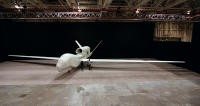 Australia's future military operations will be supported by forces of robots and unmanned vehicles which will be highly integrated and controlled by defence personnel from a distance, Defence Minister Robert Hill said today. Speaking at the opening of the Amazing World of Science event in Canberra today, Senator Hill said the Government was investing more and more on research and development of unmanned vehicle technology for use in future operations and for surveillance purposes.
Australia's future military operations will be supported by forces of robots and unmanned vehicles which will be highly integrated and controlled by defence personnel from a distance, Defence Minister Robert Hill said today. Speaking at the opening of the Amazing World of Science event in Canberra today, Senator Hill said the Government was investing more and more on research and development of unmanned vehicle technology for use in future operations and for surveillance purposes. "These new intelligent and largely autonomous systems will in the future be able to carry out hazardous tasks traditionally reserved for warfighters which will reduce exposure and risks to Australian Defence Force personnel," Senator Hill said. "This will be a huge leap in capability for our Defence Force. I envisage that in the future unmanned battlespace vehicles will be deployed in fleets to gather information, conduct surveillance, sweep for mines, defuse bombs and carry out a range of dangerous tasks. "The autonomous systems will be able to provide the ADF with increased access to its areas of operation, especially in hostile and difficult terrain.
"This advance in technology has the potential to increase the operational effectiveness of our troops and enhance surveillance capabilities while reducing risk to personnel and reducing the cost of operations." Research into such autonomous vehicles is being undertaken by the Defence Science and Technology Organisation (DSTO) under its Automation of the Battlespace Initiative (ABSI). "This is a long range research program to enhance the ADF's capabilities by dramatically increasing the autonomy, performance and affordability of these unmanned vehicles," Senator Hill said. "Trials so far have demonstrated that these autonomous vehicles can work together in cooperative way to complete assigned tasks. "DSTO is exploring the concept of expendable autonomous vehicles which will be inexpensive to manufacture and easy to repair." In time these vehicles will carry integrated communications and other capabilities linking them together and with their controllers. Senator Hill said advances in computing power, electronics, sensors, miniaturisation and smarter software has made it possible to raise automation to a new level.
David

LATEST AUSTRALIAN BUSINESS NEWS
 The Australian Federal Government has chosen the
The Australian Federal Government has chosen the The Gibbs & Cox evolved design will now compete with an Australianised version of
David